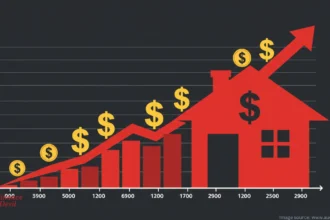As an artist, your passion and creativity are the driving forces behind your work. Whether you’re a painter, sculptor, photographer, or any other type of artist, your art is an expression of your soul, and it deserves to be protected. However, with the creative process comes a certain level of risk, and that’s where liability insurance for artists comes into play.
This comprehensive guide will delve into the importance of liability insurance for artists, the types of coverage available, and how it can safeguard your artistic endeavors. We’ll also address frequently asked questions and provide insights to help you make informed decisions about protecting your art and your livelihood.
Why Do Artists Need Liability Insurance?
As an artist, you’re likely to interact with the public, whether it’s through exhibitions, workshops, or commissioned projects. While your primary focus is on creating captivating works of art, unforeseen accidents can occur, resulting in costly consequences.
For instance, imagine a scenario where a visitor trips over your equipment during an art show, sustaining injuries. Or perhaps a piece of your artwork falls and damages a client’s property during an installation. In these situations, you could face legal claims and be held financially responsible for damages or injuries.
Liability insurance for artists provides a protective shield against such risks, shielding you from the financial burden of potential lawsuits or claims. By having the appropriate coverage, you can focus on your art without the constant worry of accidental mishaps derailing your creative journey.
Types of Liability Insurance for Artists
There are several types of liability insurance that artists should consider, depending on their specific needs and the nature of their work. Here are some of the most common types:
- Public Liability Insurance: This type of insurance covers you in the event that a third party suffers bodily injury or property damage due to your art activities. For example, if a visitor to your studio trips over your equipment and sustains an injury, public liability insurance would cover the medical expenses and any legal costs.
- Professional Indemnity Insurance: Also known as Errors and Omissions (E&O) insurance, this coverage protects you against claims of negligence, breach of contract, or failure to deliver professional services as promised. For instance, if a client alleges that your artwork failed to meet their expectations or specifications, professional indemnity insurance could cover the legal fees and potential damages.
- Product Liability Insurance: If you sell physical art pieces, such as sculptures, ceramics, or prints, product liability insurance can safeguard you against claims of injury or damage caused by a defective product. This coverage is essential if your artwork poses potential safety risks or if it’s intended for public display or use.
- Cyber Liability Insurance: In today’s digital age, many artists rely on technology to create, store, and showcase their work. Cyber liability insurance protects you against risks associated with data breaches, cyber-attacks, or unintentional online copyright infringement.
- Property Insurance: While not directly related to liability, property insurance is crucial for artists who own or rent studio spaces, galleries, or other art-related premises. This coverage can protect your physical assets, such as equipment, supplies, and artwork, from theft, fire, or other covered perils.
READ AL;SO: Protecting Your Profession: A Comprehensive Guide to Liability Insurance for Nurses
Key Benefits of Liability Insurance for Artists
Investing in liability insurance for artists offers numerous benefits that can provide peace of mind and financial security. Here are some of the key advantages:
- Financial Protection: The most obvious benefit of liability insurance is the financial protection it provides in the event of a lawsuit or claim. Legal fees, medical expenses, and potential settlements can quickly add up, potentially draining your resources and jeopardizing your artistic career. With the right insurance coverage, you can mitigate these financial risks and focus on your art without worrying about the potential consequences of an accident or mishap.
- Reputation Safeguard: As an artist, your reputation is your most valuable asset. A single incident or claim can tarnish your hard-earned reputation, making it challenging to secure future commissions or exhibitions. Liability insurance can help protect your brand and reputation by providing a professional and responsible approach to risk management.
- Contractual Requirements: Many galleries, art institutions, or clients may require artists to carry liability insurance as a condition for participating in exhibitions, workshops, or commissioned projects. Having the appropriate coverage can open doors to more opportunities and ensure compliance with contractual obligations.
- Peace of Mind: The artistic process often involves immersing oneself in the creative flow, and the last thing you want is the constant worry of potential liabilities. With liability insurance, you can pursue your passion with greater peace of mind, knowing that you’re protected against unforeseen circumstances.
Conclusion: Embrace Your Creativity with Confidence
As an artist, your passion and creativity are the driving forces behind your success. However, the pursuit of artistic expression should not come at the cost of financial security or legal vulnerability. Liability insurance for artists is a crucial investment that can provide peace of mind, protect your reputation, and safeguard your artistic endeavors.
By understanding the types of coverage available and the potential risks associated with your art activities, you can make informed decisions about the appropriate liability insurance for your needs. Remember, accidents can happen even with the utmost care and precautions, and having the right insurance coverage can make all the difference in protecting your artistic journey and ensuring that your creativity continues to thrive.
Embrace your passion with confidence, knowing that you have a safety net in place. Invest in liability insurance for artists and let your creativity soar without the weight of potential liabilities holding you back.
Frequently Asked Questions (FAQs)
Is liability insurance for artists legally required?
No, liability insurance for artists is not legally required in most cases. However, it’s highly recommended to protect yourself from potential financial risks and legal liabilities associated with your art activities. Many galleries, art institutions, or clients may require artists to carry liability insurance as a condition for participation or collaboration.
How much does liability insurance for artists cost?
The cost of liability insurance for artists can vary depending on several factors, such as the type and extent of coverage, the nature of your art activities, and your location. Generally, premiums for basic public liability insurance can range from a few hundred dollars to over a thousand dollars annually. It’s essential to shop around and compare quotes from different providers to find the most suitable and affordable coverage for your needs.
What is the difference between public liability insurance and professional indemnity insurance for artists?
Public liability insurance covers third-party claims for bodily injury or property damage caused by your art activities. On the other hand, professional indemnity insurance (also known as errors and omissions insurance) protects you against claims of negligence, breach of contract, or failure to deliver professional services as promised. While public liability insurance is essential for most artists, professional indemnity insurance may be particularly relevant for artists who provide commissioned works or professional art services.
Can liability insurance cover the cost of damaged artwork?
Liability insurance primarily covers third-party claims for bodily injury or property damage. It does not typically cover the cost of damaged or lost artwork belonging to the artist. To protect your physical artwork and equipment, you may need to consider additional coverage, such as property insurance or artist’s equipment insurance.
Do I need liability insurance if I only sell my artwork online?
Even if you primarily sell your artwork online, liability insurance can still be beneficial. While the risk of physical injury or property damage may be lower, you could still face potential claims related to copyright infringement, defamation, or breach of contract. Additionally, if you occasionally participate in art fairs, exhibitions, or workshops, liability insurance can provide valuable protection.
In another related article, Liability Insurance for Doctors: Safeguarding Your Career and Patients





